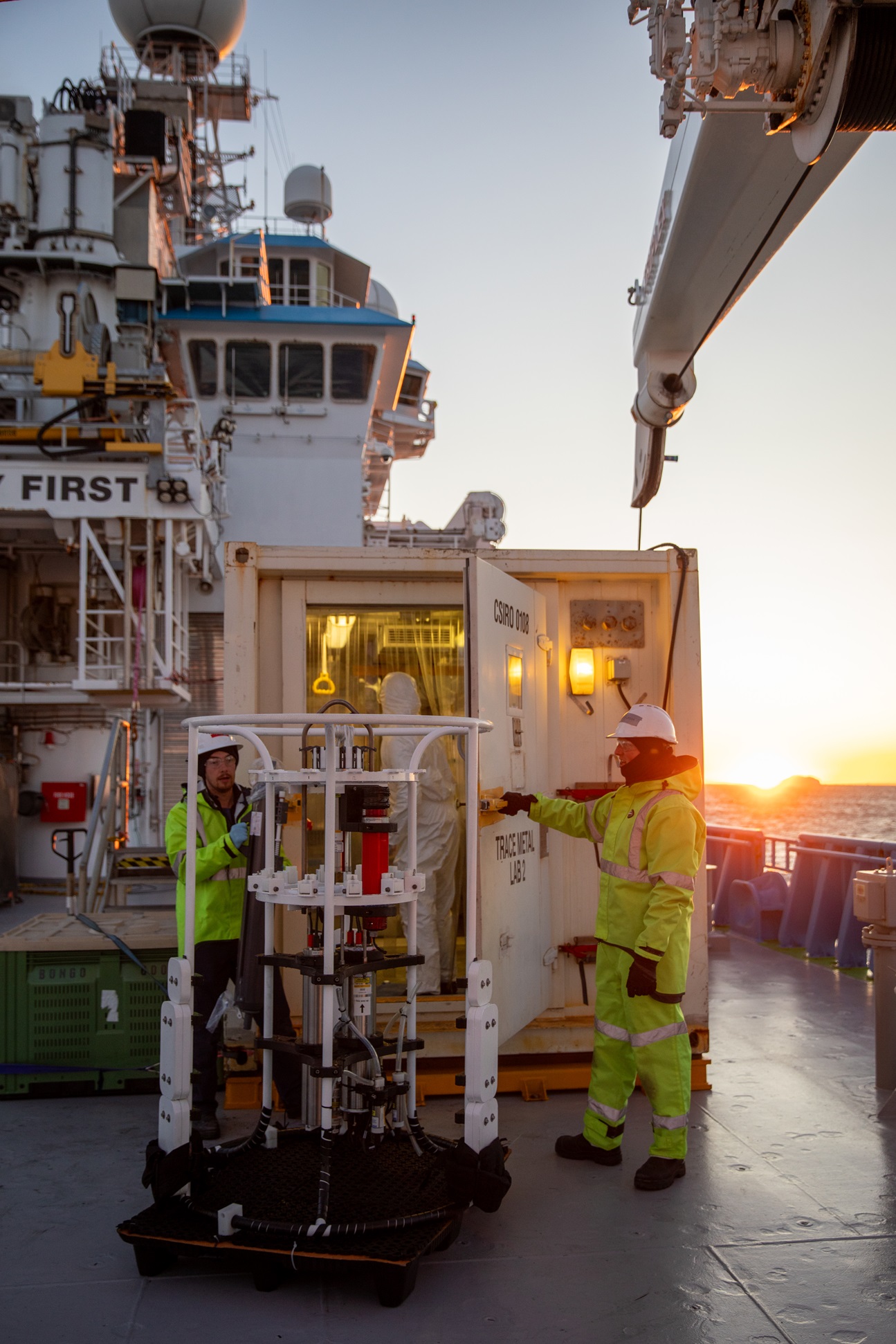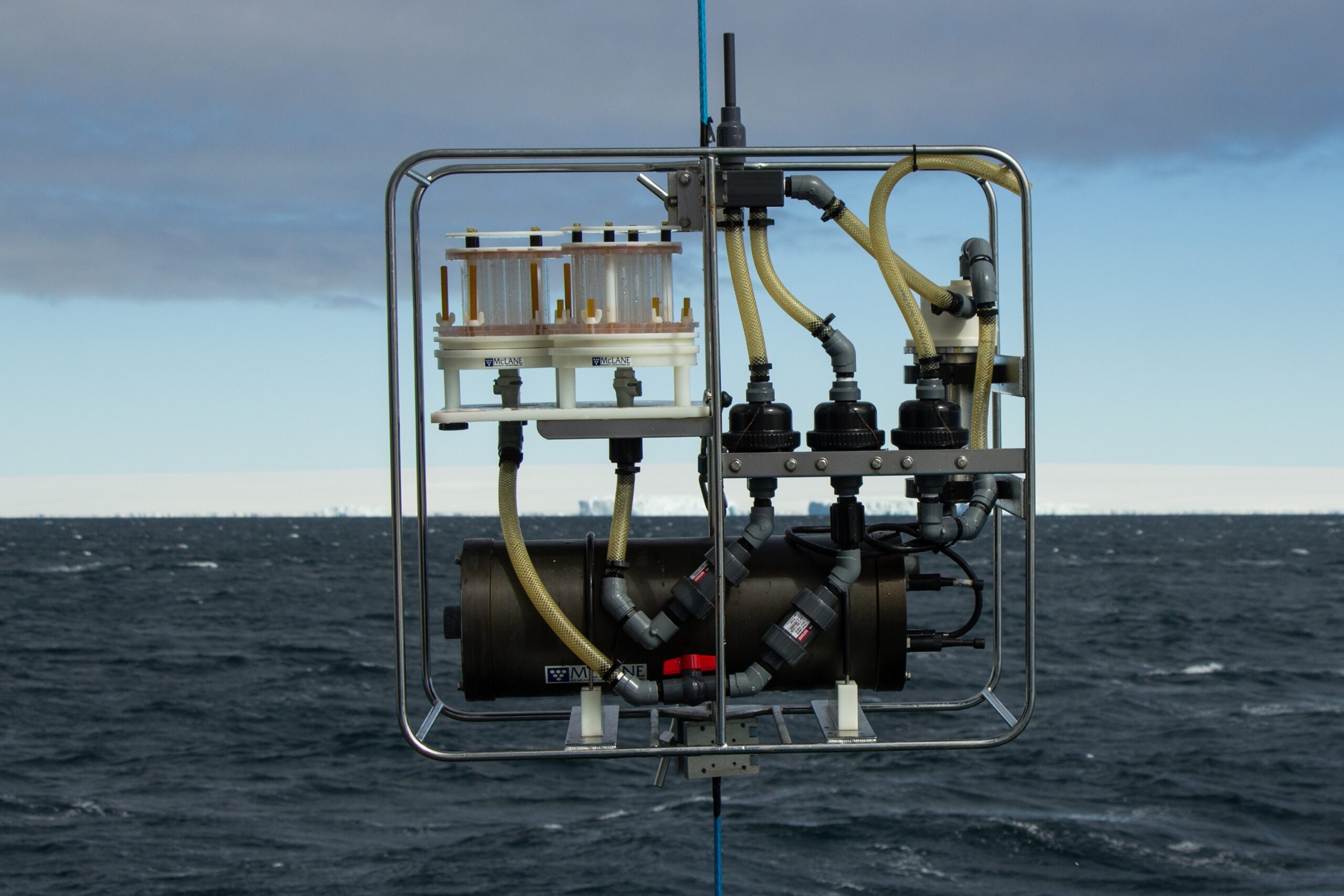The Australian GEOTRACES GS05 team makes half century
by Scott Meyerink, AAPP (Source: MISO’s voyage blog)
It’s been 55 days since CSIRO research vessel (RV) Investigator left Hobart for its longest and perhaps most ambitious voyage into the Southern Ocean. Onboard, the GEOTRACES team comprises seasoned researchers and diligent students who have tirelessly collected samples of air, seawater and marine particles to acquire the crucial data for furthering our understanding of oceanic environments.
The core goal of the MISO voyage (standing for Multidisciplinary Investigations of the Southern Ocean) is to study the interactions between Southern Ocean biology, chemistry and physics. Specifically, trace metals (such as iron, zinc, manganese, copper, nickel and many others) are critical micronutrients for the growth of phytoplankton and essential to understanding what processes control Southern Ocean biology and its connection to the carbon cycle and climate.

Our MISO voyage aims to improve our understanding of how the Southern Ocean region influences the global ocean-earth system and use this knowledge to improve earth-system models. Within this context, the GEOTRACES team has been collecting samples for trace elements and isotopes (TEIs) along GEOTRACES section GS05 that comprises specific transects: the southern sections of GO-SHIP lines SR03, P11, an unnamed section along 132°E, and the I09S line at 115°E.
Dissolved and particulate fractions of TEIs in the water column are both sampled. To achieve this, we have deployed specialised equipment: Trace Metal Rosette (TMR – used to collect samples for dissolved metals in the water column) and In-situ Pumps (ISPs – used to sample the particulates at set depths in the water column). Metals in airborne aerosols and rain are also sampled using a dedicated aerosol sampler that is attached to the ship’s clean air intake on the bow and a rainwater sampler, respectively. Recently our team completed its 50th TMR out of 63 planned TMR stations, and the 15thdeployment of the ISPs is coming up soon.
Metals in the ocean are present in extremely low concentrations, so sampling techniques need to be super-clean to avoid contamination. We need to use specialised equipment, such as a trace-metal clean sampling system (i.e. TMR) and a clean sub-sampling area (like a mobile clean-lab). Trace metal-clean equipment is generally made of non-metallic components and actively cleaned to minimise contamination of samples. Samples are collected under laminar flow to ensure a particle-free zone in the clean lab. Later, they’re analysed on-shore for metal concentrations, isotopes (both stable and radiogenic) and metal-binding ligands – organic molecules that have a huge impact on metal cycling in the ocean.

Our team has collected almost 3000 samples, including:
- micronutrients needed for ocean productivity;
- rare earth elements used to fingerprint elemental sources;
- toxins such as mercury;
- proxies of ocean acidification;
- isotope samples used to track natural and contaminant sources and ocean circulation;
- ligands that bind trace metals and control their bioavailability, and
- marine particles that act as essential transport vectors of trace elements.
The sheer diversity of samples we’ve collected is a reflection of the collaborative and multi-disciplinary nature of the MISO voyage. TEI’s and metal-binding ligands will be analysed by several partner institutions including GEOMAR (Germany), Australian National University, University of Cape Town (South Africa), and University of Washington (USA), with assistance of collaborators from around the world.
Results from these analyses are of fundamental importance to scientists studying the response of primary production and phytoplankton species composition to physical changes in the Southern Ocean arising from climate change. Additional analysis of isotopes (both radiogenic and stable) will offer insights into dust transport from continental land masses, phytoplankton physiological processes, and the formation and fate of major Southern Ocean water masses.
The voyage is due to conclude in Fremantle on 5 March 2024.

Learn more about this cruise at the MISO’s voyage blog.
